**This post contains affiliate links**
Let’s chat about the DIY range hood that I made for our recent kitchen remodel!
If you’d like to watch the process of our DIY kitchen remodel, you can head to the KITCHEN highlight in my Instagram profile!
Now, I wouldn’t necessarily call this project ‘hard’, but it is a little complicated if you’re a first timer like me. There’s a lot of measuring and logistics that go into this project and you have to make sure it all works with the type of vent hood you’re using. So, my goal for this post is to help you understand how to make sense of it all if you’re planning on doing this project yourself!
Choosing your vent hood.
This is where I would start in your planning. You’ll want to figure out whether you want/need a ducted or ductless hood. For me, we don’t have a duct that goes from the kitchen to the outside of our house so I knew we needed ductless. These types of hoods still work well, they just require a charcoal filter that needs to be changed out every so often. This is the vent hood I chose and it came with two filters to get us started! The other thing you’ll want to know when choosing your hood is what size – this, in most cases, will probably match the width of your range/stove. Ours was a standard 30″ so that’s what I went for when choosing a vent hood size.
Another aspect to think about when choosing a hood is the filters or grates. This was a really important feature to me because I was so tired of how tough our old hood was to clean. The new one we purchased has easily removable filters that you can clean by hand or even run in the dishwasher – so nice.
Also, be sure to read reviews when you’re choosing a hood. Some can be obnoxiously loud and, if you’re like my MIL, you might end up with one that turns on by itself and is so loud it sounds like a jet is landing in your kitchen lol. Just do your research and know that all vent hoods are not created equal!
Framing measurements.
Now that you have your actual hood chosen, you can move on to figuring out your framing measurements. One thing to note is that when you get your vent hood in you’ll want to pay close attention to the manual because it will tell you how high above the stove it should sit and how far over it should be from the wall. These are important for the proper function and effectiveness of your vent. Also, be sure to factor in the width of the drywall you will be using. It doesn’t make a huge difference, but you don’t want any surprises at the end!


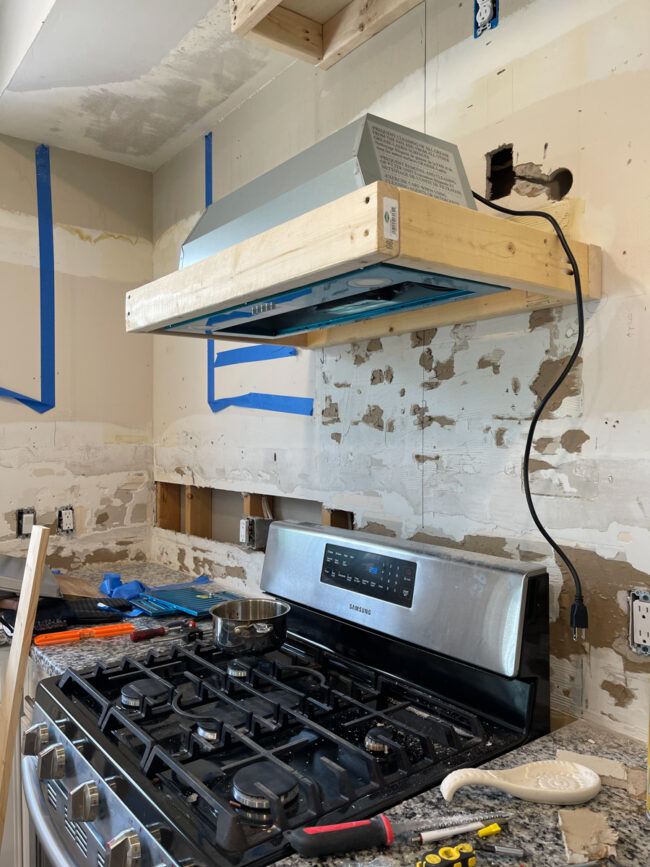
After that, you’ll want to decide how big and in what shape you want your desired overall range hood cover. For me, I knew I wanted a slight taper down from top to bottom (width) and a slight curve down the front (depth). Knowing that, I went on a hunt on Pinterest for blog posts that could help me. Let me refer you to the blog post that I myself referred back to numerous times while trying to figure out this project. It’s by Plank & Pillow and it is super helpful! Now, their hood is a lot bigger than mine overall, but I used the same difference in measurements for the top and bottom frame and took notes from them about how they did the supports and Venetian Plaster.
Drywall and joint compound.
Once you have your frames built out, you’ll want to add supports to secure it all to the wall (and/or ceiling), as well as supports for the drywall that you’ll cover the wood with. To keep it attached to the walls and ceiling, I used a combination of L brackets and a couple of these metal strips that I was able to bend into place.


Now, in order to get a curve down the front of the range hood, you’ll want to make cuts in the support pieces and drywall pieces. These cuts will go about halfway through the boards to allow for the wood to bend slightly. This may take a little bit of patience and trial/error, but it’s worth it!
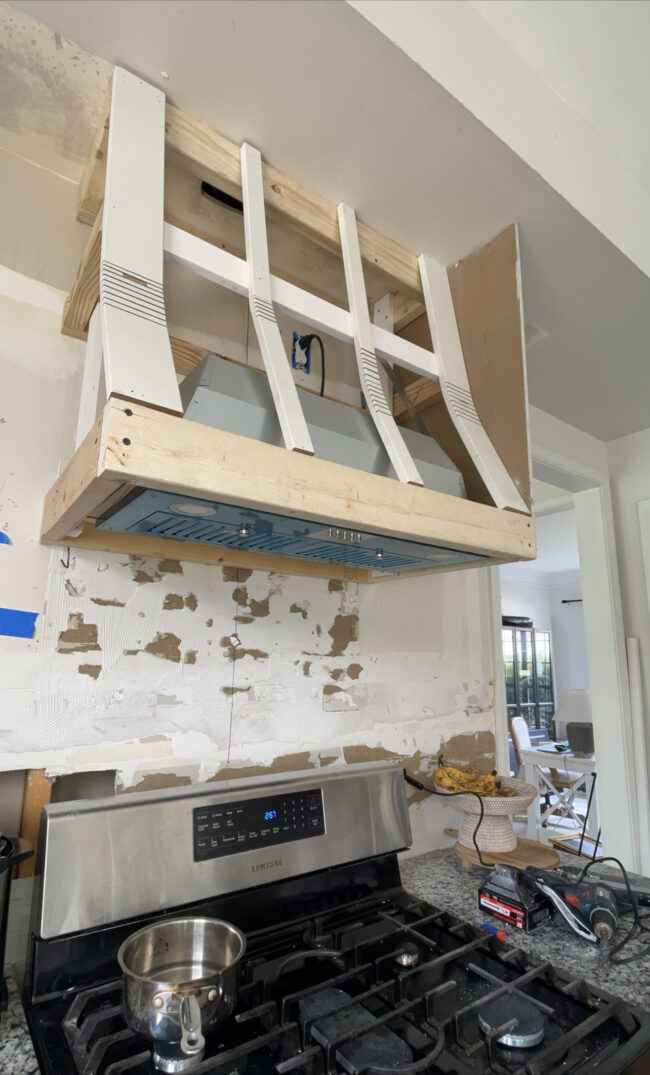
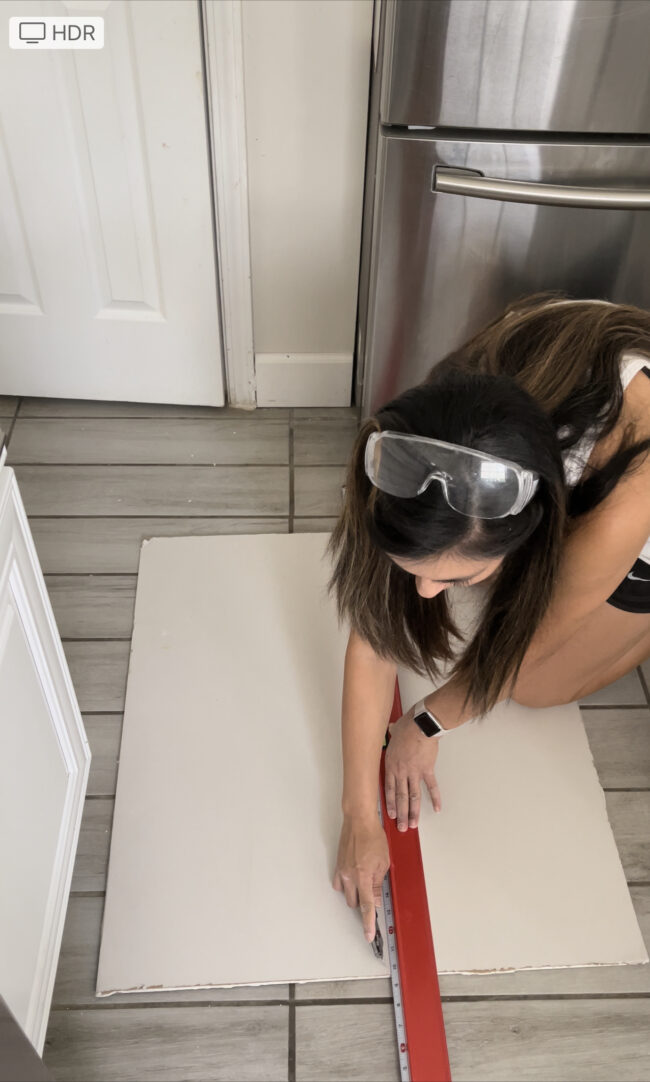
To get the bend in the drywall for the front of the hood, I used a utility knife and a straight edge. You want to push firmly when making your cut but not hard enough to cut all the way through. I found that doing this on both the front and back of the drywall piece made it much easier to bend.
Once I had the drywall attached, I used corner bead to get nice, neat edges. I attached it to the drywall using a staple gun and found that cutting the corners at a 90 degree angle made it easier to get neat corner edges!
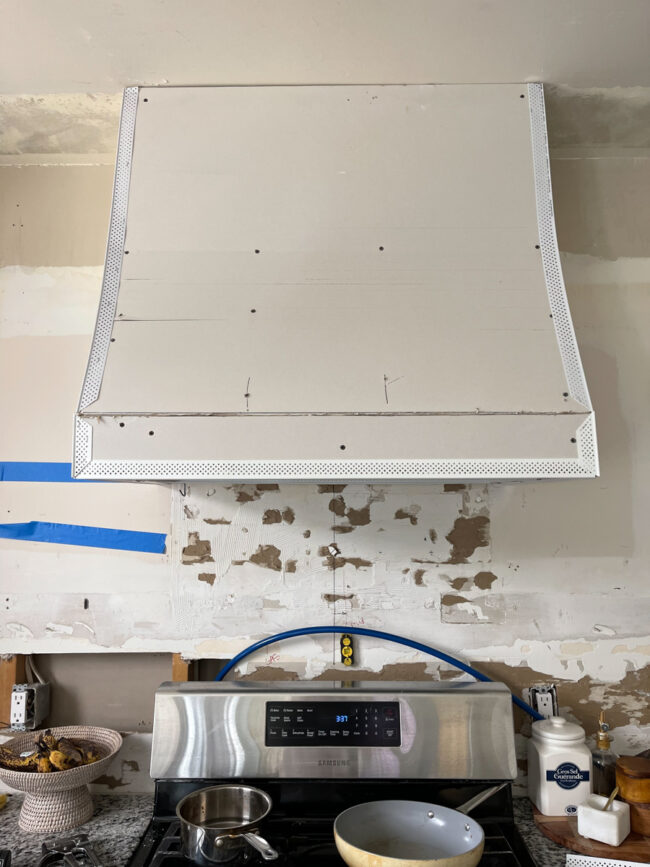
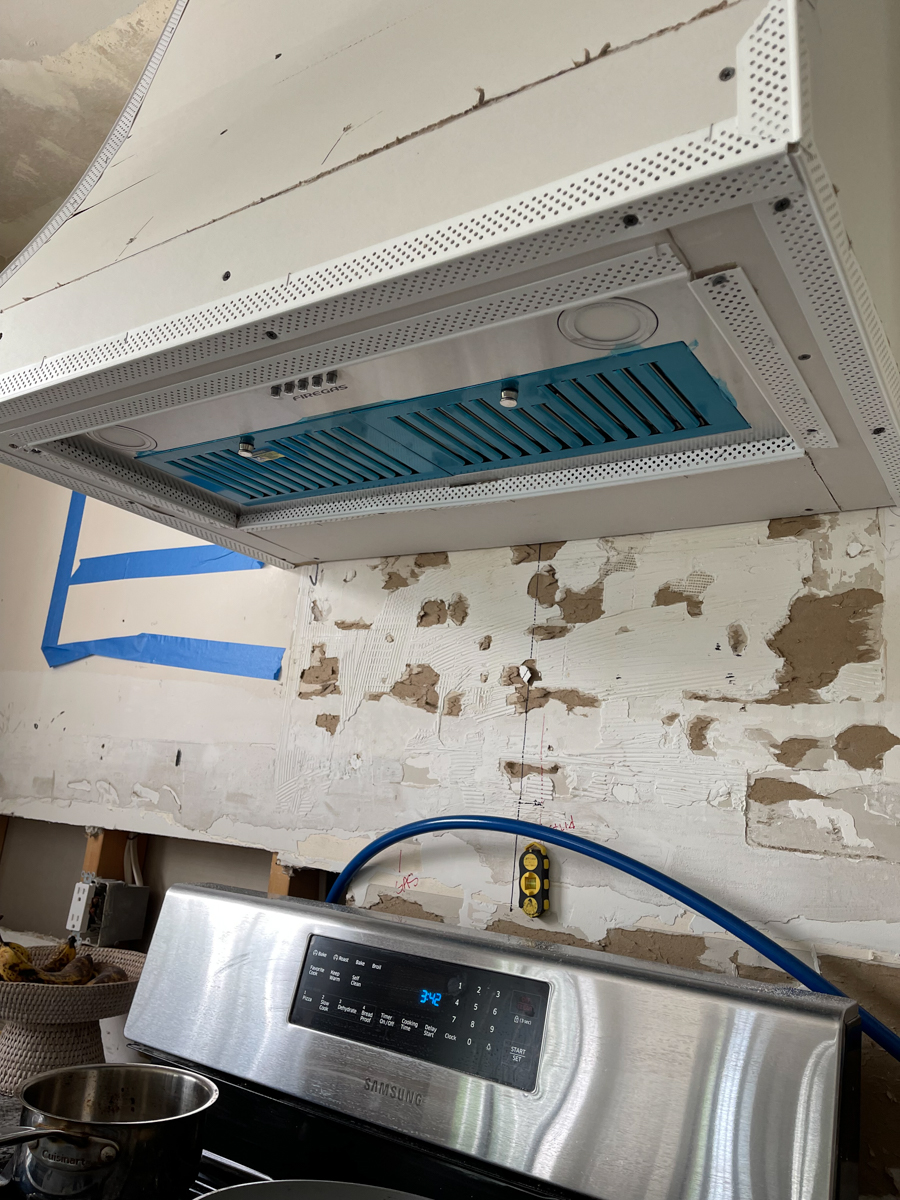
Once the corner bead was finished it was time for joint compound. We buy this huge pre-mixed bucket of it and love always having it on hand for filling holes, fixing gouges and, of course, projects. The first layer went on pretty rough. But after some sanding it really started to take shape and look really good! I think I did 3 coats total before I felt it was ready for primer.


Venetian plaster.
Before applying Venetian plaster to drywall, you’ll need to prep it with a special primer. I used the same products that were recommended in the Plank & Pillow post – Anchor Primer and Marmorino Piatto plaster. You can have them tint the plaster to just about any color. I had them do the same color as our walls, Classic Gray by Benjamin Moore. Since I ordered a quart of primer and a gallon of plaster, I ended up having a good amount of each left over, so I’m planning on using the rest on our mantle in the coming weeks! Stay tuned for that if you want to see more in depth as to how it’s applied.
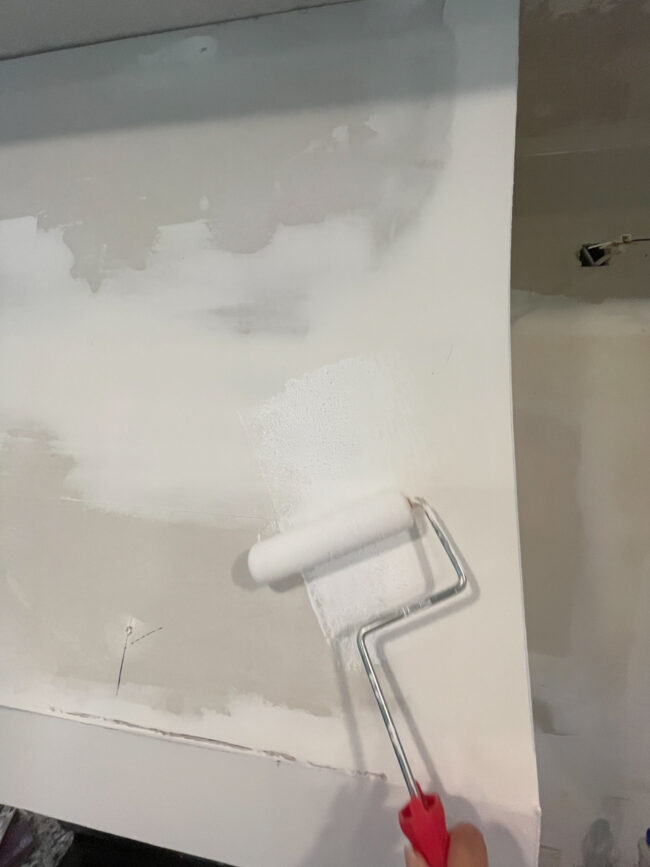
I can tell you, applying the plaster was a little scary at first because I was afraid to mess it up. But once I realized I liked the look of slight ridges and texture it was actually a lot of fun to do! You can also take a sander to it in between coats to achieve the exact look you want.. so don’t stress!
After the plaster was on, I sealed it with this varnish. I get asked all the time if I worry about cleanup or how it will hold up being in such a mess-prone part of the kitchen.. But I really think this sealant has done an amazing job at protecting it and making it easy to wipe clean!
Sorry, I don’t have very good photos of this process. But, like I said, I’m doing it all over again on our mantle soon! So be sure to follow along in stories! Here is the finished result:

And there you have it! Let me know if you have any questions in the comments below! I hope you find this post helpful in some way as you start plan and execute your own DIY Venetian Plaster range hood project 🙂
Pin for later!
Like this post and want to save it for later? Pin the image below to your Pinterest!
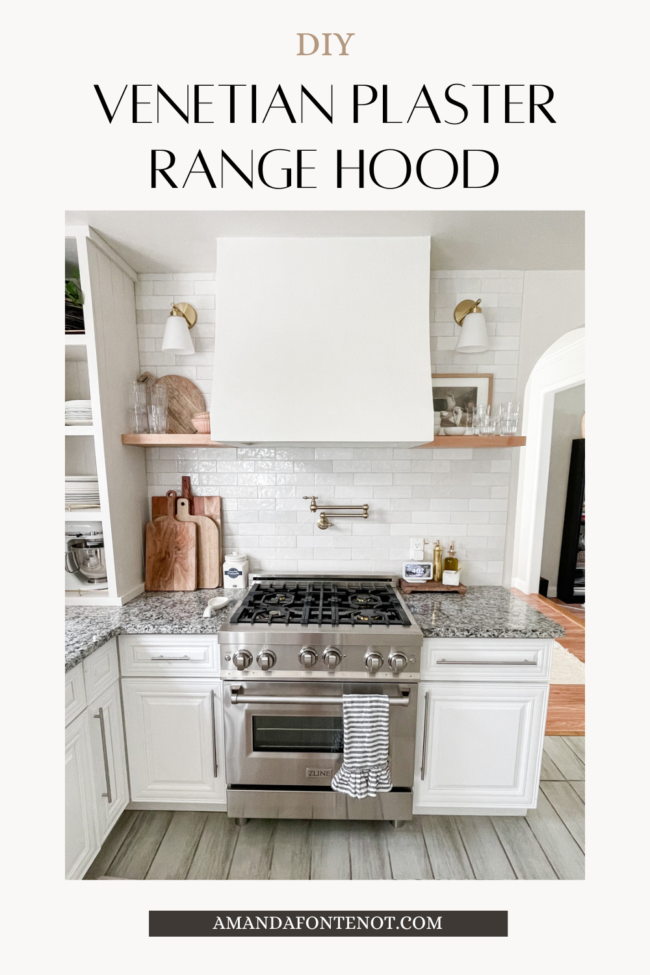
P.S. If you’d like to see more of our DIY kitchen remodel, you can click here!


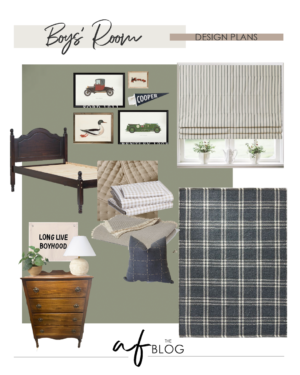
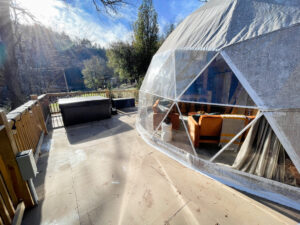
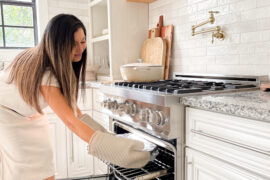
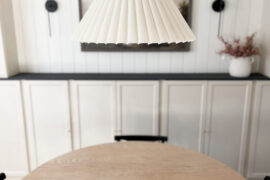
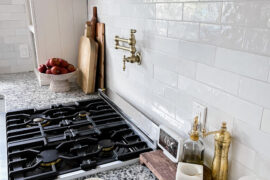
4 Comments
How are you venting the hood? I don’t see any holes.
It has a charcoal filter!
Hi Amanda! Thanks for sharing your process here. Now that it’s a been a little while since you finished your hood, are you still finding the Modern Masters varnish you linked has held up? Do you find grease floats up and lands on the plaster (it does in my current kitchen with a stainless steel hood)? If so, when you wipe with soap and water to clean, does if affect the plaster finish? Do you have to reapply the varnish? I’ve also read some people use beeswax as a finish over the plaster, but the varnish seems like it’ll last longer. Thanks for your thoughts!
Hi Stephanie!
We (very) recently moved, but I had just given the hood a thorough cleaning and while the grease does get up on the hood, the varnish did it’s job in making it very easy to wipe clean. We saw zero issues! If you’re worried, I’d suggest giving it an extra coat or two 🙂 But no complaints here!